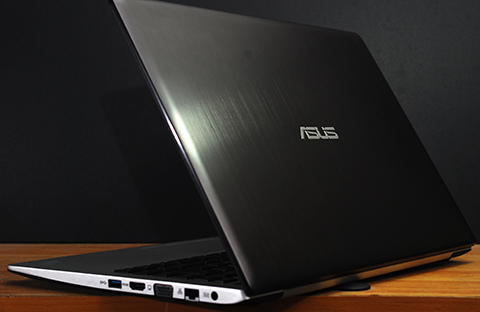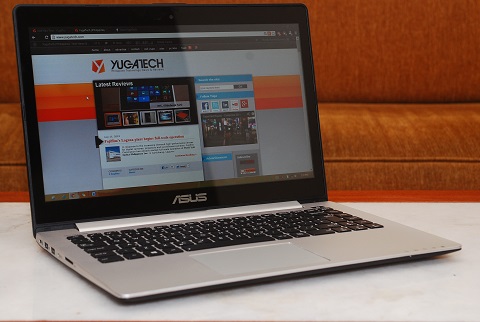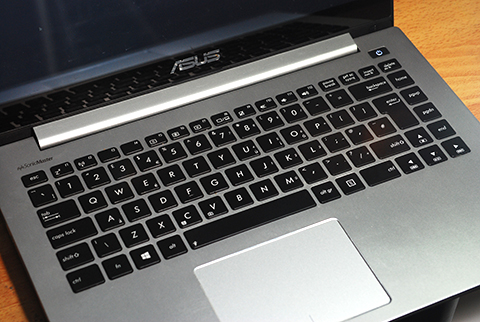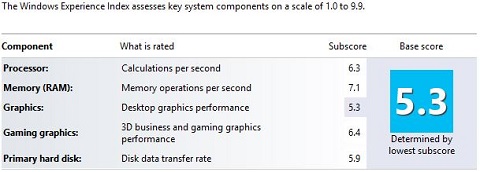While I’m waiting for my laptop to be repaired, ASUS PH has been kind enough to lend me this VivoBook S400C to use temporarily. Although an engineering unit, it has been my workhorse ever since I got it, thus it’s only right to give it a proper exposure.
Design and Construction
Although the S400 has a less premium build, it has a certain affinity to the Zenbook’s design language; the brushed aluminum back plate, its tapered body and a Macbook-inspired keyboard layout.

Its sides are mostly occupied by a handful of ports; a pair of USB 2.0’s on the left which is accompanied by SD card slot, audio jack and a hole for the Kensington lock. The list continues on the right side which houses the ports for AC adapter, Ethernet, VGA, USB3.0 and HDMI.
There’s a quintet of LED light indicators at the bottom right side of the S400C’s body. It occupies a small portion of the sizeable palm rest that surrounds the rather large clickpad. The only other notable component in this area is the Power button which sits at the upper right corner of the aluminum chassis, just above the black Chiclet keys.
Display and Audio
The VivoBook S400C is one of the first few batches of mid-ranged notebooks to come preinstalled with Windows 8. As such, it’s equipped with a touchscreen panel to go along with its 14-inch WXGA display to fully maximize its OS’s touch-based functionalities. In terms of the display performance, we can say that S400C’s panel is one of the more decent WXGA screens that I’ve seen in this price range. It did well in bringing out natural colors, as well as giving proper distinction to various levels of white.

What it didn’t excel on, however, is outdoor legibility, particularly under a bright sunny day, and producing dark blacks. Other than that, the S400’s screen works as it should, not to mention its superb responsiveness to touch.
Although the sound was full and detailed, the native volume that we got from this notebook’s speakers was a bit too soft for our liking. It’s not that big of a deal as it can be boosted by using 3rd party media players such as VLC, but it would’ve been better if we didn’t have to resort to that in the first place.
Keyboard and Clickpad
In all honesty, I’ve never been a fan of ASUS’ keyboard. However, I think that it’s more of a placement/layout issue, rather than the build itself because the keyboard on the ASUS laptops that we’ve reviewed were able to provide desirable feedback and are well-spaced. It’s just that some keys aren’t where they’re supposed to be and that it requires some getting used to before everything feels natural.

Luckily, we didn’t have to deal with any issues with the S400C’s clickpad. From its placement, to its size, down to its dpi/responsiveness, everything just works like a charm.
Performance
Knowing that this unit was just an engineering build from the get go, we didn’t bother too much on pushing it to its limit to measure its performance. However, having been used as a main PC, it didn’t have that much choice but to cope with our demands which includes heavy browsing (12-16 windows on average), a few MS Word opened, photo editing using Adobe Photoshop CS6, while one of the many media players play tracks on the background.

And while that kind of usage isn’t anywhere near intense, we’re glad to report that the S400C was able to handle the task quite impressively. Apart from the occasional random boots and crashes when resuming from sleep, we we’re actually pretty pleased with it.
Battery life
There are a lot of things to be desired about this unit, but battery life isn’t one of it. It only takes 3-4 hours of browsing over Wi-Fi until we’re warned to find a wall outlet to charge it. Moreover, the battery is not user replaceable which is a bit of a bummer, especially to those who are looking to use this PC for a while.
ASUS VivoBook S400C specs:
14” HD LED Touchscreen Display @ 1366×768
1.7GHz Intel Core i5-3317U CPU
Intel HD Graphics 4000
4GB DDR3 RAM
500GB HDD + 24GB SSD
720p webcam
SD/MMC card reader
WiFi 802.11 b/g/n
mini HDMI
VGA
RJ-45
1x USB 3.0, 2x USB 2.0
mic/headphone-out
3 Cell battery, 5200mAh
Dimension: 339 x 229 x 21mm
Weight: 1.85kg
Windows 8 64-bit
Conclusion
If we’re gonna take out the quirks brought by the fact that it’s an engineering unit, we have to say that the ASUS VivoBook S400C is a solid all-rounder in the 14-inch category. It’s a marriage of decent specs and well-constructed body with a hint of Zenbook on the side.

It may not be too big of a deal for some, but we also like the inclusion of touchscreen panel in to its arsenal considering that Windows 8 is optimized for such displays. In addition, we were impressed at how it was able to handle our usual blogging needs given that it’s just a test unit.
The last time we checked, the ASUS VivoBook S400C, with the configuration stated above, will set you back Php35,995USD 613INR 51,998EUR 584CNY 4,467. However, with the influx of the 4th-Gen powered notebooks, there’s a good chance that that price tag have already gone down. That said, it’s best if you check out local retailers to get the latest pricing for this laptop.

YugaTech.com is the largest and longest-running technology site in the Philippines. Originally established in October 2002, the site was transformed into a full-fledged technology platform in 2005.
How to transfer, withdraw money from PayPal to GCash
Prices of Starlink satellite in the Philippines
Install Google GBox to Huawei smartphones
Pag-IBIG MP2 online application
How to check PhilHealth contributions online
How to find your SIM card serial number
Globe, PLDT, Converge, Sky: Unli fiber internet plans compared
10 biggest games in the Google Play Store
LTO periodic medical exam for 10-year licenses
Netflix codes to unlock hidden TV shows, movies
Apple, Asus, Cherry Mobile, Huawei, LG, Nokia, Oppo, Samsung, Sony, Vivo, Xiaomi, Lenovo, Infinix Mobile, Pocophone, Honor, iPhone, OnePlus, Tecno, Realme, HTC, Gionee, Kata, IQ00, Redmi, Razer, CloudFone, Motorola, Panasonic, TCL, Wiko
Best Android smartphones between PHP 20,000 - 25,000
Smartphones under PHP 10,000 in the Philippines
Smartphones under PHP 12K Philippines
Best smartphones for kids under PHP 7,000
Smartphones under PHP 15,000 in the Philippines
Best Android smartphones between PHP 15,000 - 20,000
Smartphones under PHP 20,000 in the Philippines
Most affordable 5G phones in the Philippines under PHP 20K
5G smartphones in the Philippines under PHP 16K
Smartphone pricelist Philippines 2024
Smartphone pricelist Philippines 2023
Smartphone pricelist Philippines 2022
Smartphone pricelist Philippines 2021
Smartphone pricelist Philippines 2020
chaoticheaven17 says:
Full HD and the resolution is 1366×768? Give me a break…
Joseph says:
S400c is an old model so it is not worth buying it. You can buy the newer model available in the PH market which is ASUS VivoBook S550CM. It costs approximately Php37,000 and already has NVIDIA GeForce GT635M DDR3 2GB graphics. I was planning on buying it however I found out that there is a better choice which is Asus N550JV-DB72T. This baby costs around $1100 in the US and it has the following specs so I’ll just have to wait a little more since it will be worth the wait.
MODEL:
ASUS N550JV-DB72T
DISPLAY:
15.6″ FHD (1920×1080) Matte Touch
VIDEO:
NVIDIA GT 750M (2.0GB) GDDR3 w/ Optimus
PROCESSOR:
4th Generation Intel® Mobile Core i7 4700HQ
MEMORY:
8GB DDR3 1600MHz (Up to 16GB)
HDD:
1TB 5400RPM Hard Drive
BATTERY LIFE:
5.5 Hours
daniel says:
When did a 1366×768 resolution turned out to be a FullHD after all?
Ernie says:
Looks like a MacBook Pro to me.
Joyce says:
This is my work laptop. I love it, except minsan parang namimili ng Wi-Fi. Signal is pretty weak compared to my other devices and drops sometimes. But I think that’s an Asus problem since ganun din yung Nexus 7 ko.
Mark says:
Im using S400C with windows 8 pro. im only getting 4.9 in contrast to 5.3